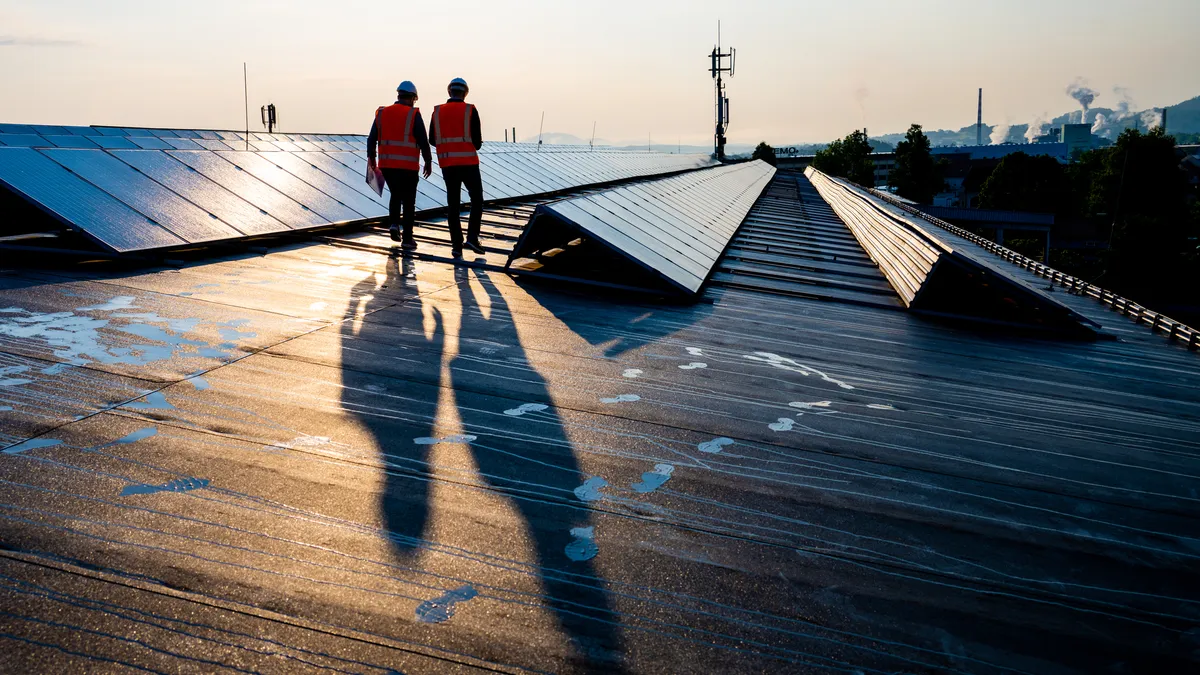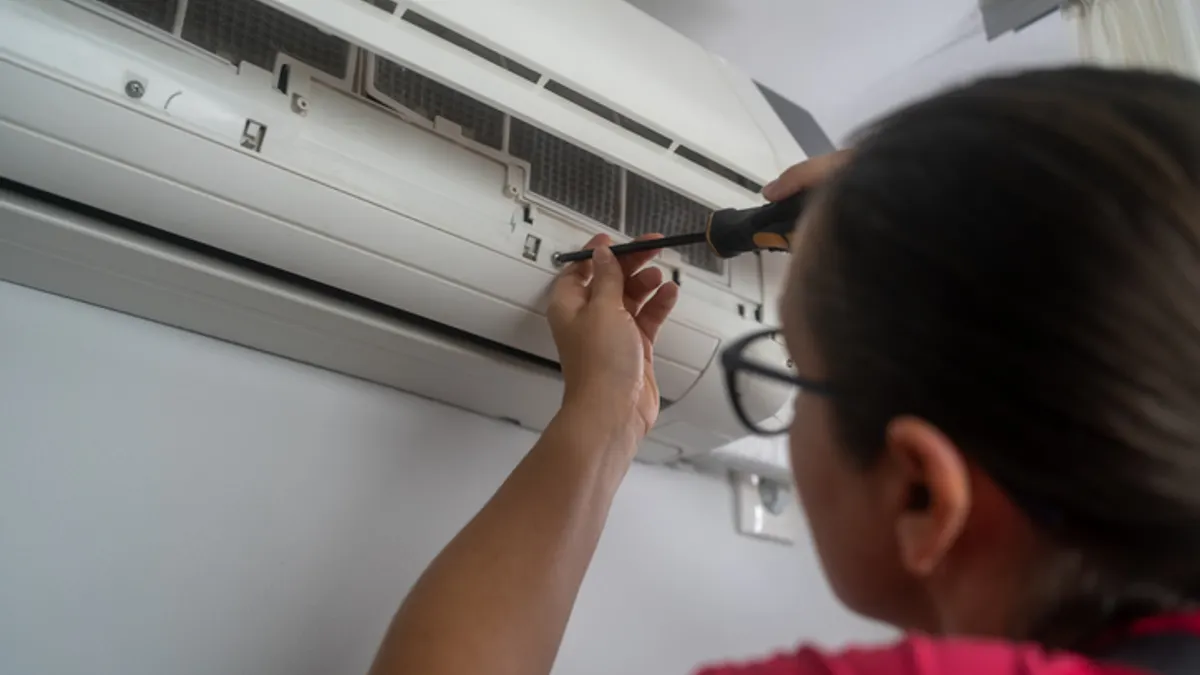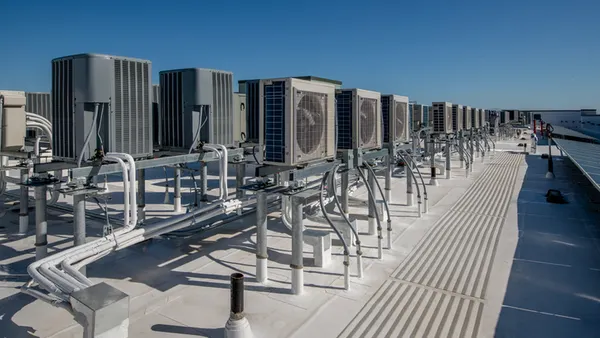Dive Brief:
- Brookfield Properties plans to transition all of its U.S. office buildings to zero emissions electricity in three years, according to a press release.
- The commercial real estate developer said that more than 65% of its office space will be powered with zero emissions electricity by next year.
- The transition is expected to cut total direct carbon emissions from Brookfield’s U.S. office portfolio by roughly 80%, eliminating scope 2 emissions associated with electricity consumption.
Dive Insight:
Brookfield Properties, which operates U.S. office assets on behalf of Brookfield Asset Management, has said that it will enter into contracts for about 600,000 MWh of electricity from zero emissions generation sources that its office properties use annually. The developer expects that these contracts will help it achieve decarbonization equivalent to avoiding more than 260,000 metric tons of CO2 each year. That level is comparable to greenhouse gas emissions from charging 24 billion smartphones or emissions from nearly 300 million pounds of coal burned.
Brookfield said it will procure local renewable electricity for its office properties. Hydropower generation is expected to account for 49% of that electricity, while wind farms and solar facilities are estimated to contribute about 33%.
Brookfield’s bundled offtake agreements with local zero emissions electricity providers in New York, Washington, D.C., and Maryland are expected to enable new plants that will supply more than 85% of its power.
In places like Denver and Virginia, where the company does not have power-purchase agreements, it will use virtual PPAs to buy renewable power from within the same grid in which electricity is used, at least until direct-purchase options for local zero-emissions electricity supply become available. These same-grid certificate partnerships will deliver the electricity Brookfield purchases from these providers to local power grids simultaneously with the electricity consumption of its office buildings.
Brookfield plans to facilitate the construction of new solar plants in Houston and Los Angeles to supply 100% of electricity for its office locations in both regions.
“Buying locally incentivizes the development of new regional clean energy sources, supporting decarbonization goals and providing a more direct connection between the source of energy generation and location of energy consumption,” the company said in a release.
As decarbonization leaps to the forefront amid pressure targeting commercial landlords, a transition to fully electric buildings is viewed as a harbinger of the next-generation built environment. But there is no one-size-fits-all approach to implementing a 100% electricity strategy, according to Mark Grinis, EY Americas construction, real estate and hospitality leader.
“The speed of the transition will be impacted by the flow of capital and a delicate balance between stakeholder considerations and project economics,” Grinis wrote in a report released earlier this year.
Grinis noted, “The current power grid does not have the capacity to support cities filled with electric buildings. System upgrades are needed, and holistic grid-to-property strategies will have to be developed to transition commercial real estate from a reliance on fossil-fueled power to structures that can be equipped to run solely on electricity.”












